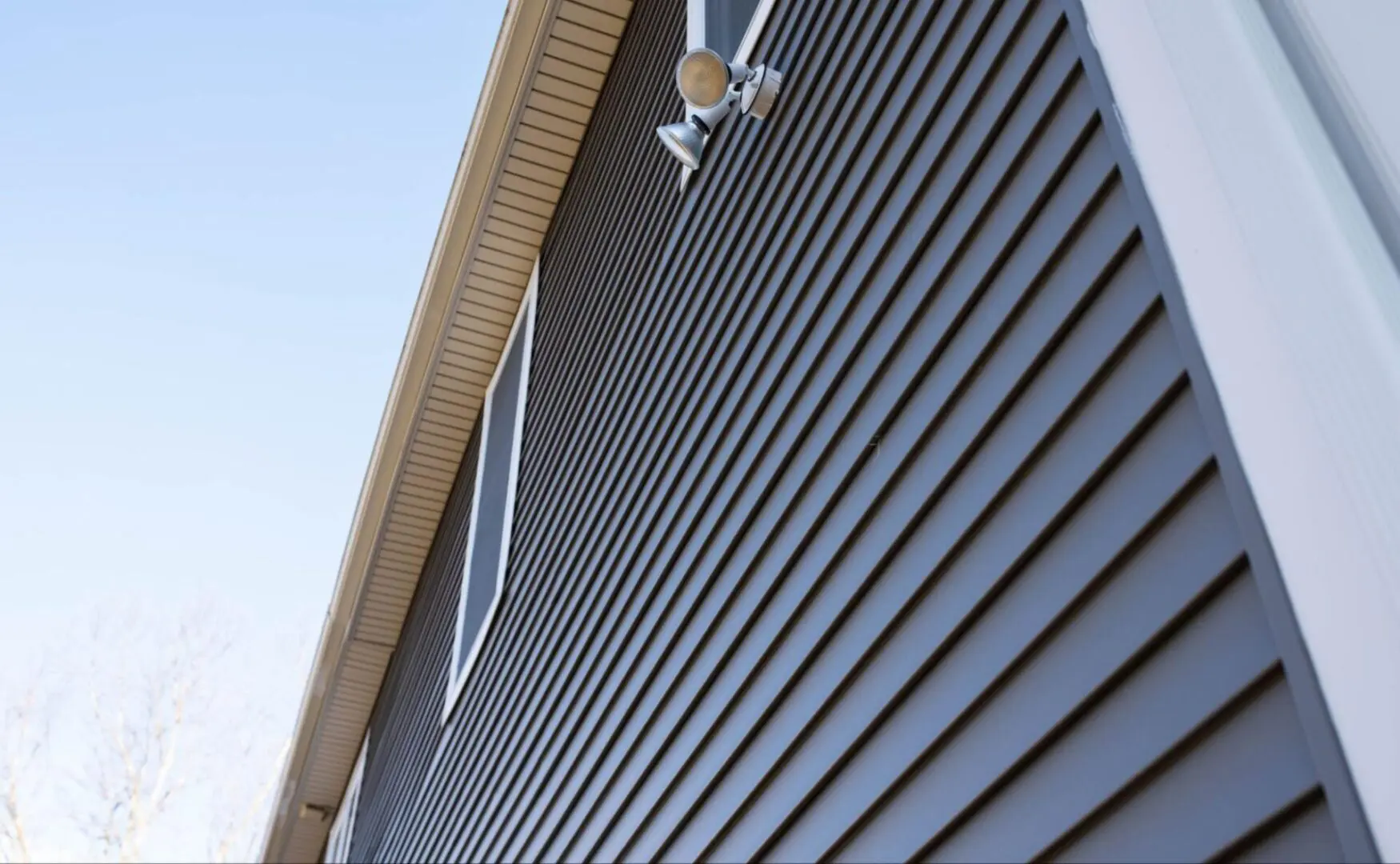
Your home’s siding protects it from the weather and enhances curb appeal. Over time, siding can deteriorate, presenting you with a challenging decision. Should you repair it or opt for a complete replacement? The decision can depend on the damage, material, and cost. Understanding the options empowers you to make an informed choice, ensuring your home always looks its best.
Understanding the Role of Siding for Houses
Siding serves more than just an aesthetic purpose. It acts as a barrier against harsh weather, pests, and moisture, keeping your home safe. Siding also enhances your home’s insulation and energy efficiency, making it a vital element in your house’s overall structure. With proper care and maintenance, siding can last for decades. However, neglect can lead to costly issues that affect your home’s integrity.
If your siding is compromised, your house could face problems like water damage, mold growth, and even structural decay. These risks make regular inspections and timely repairs essential. However, replacement may become inevitable when the damage goes unnoticed for too long. That’s why it’s crucial to stay proactive regarding your siding.
Signs It’s Time to Repair Your Siding
Recognizing the right time to repair your siding can help extend its lifespan and save you money. Minor issues can often be fixed without the need for a total replacement. Below are some common signs that indicate your siding can be repaired rather than replaced:
Small Cracks or Chips
Small cracks, especially in wood or vinyl siding, can often be repaired by replacing the damaged sections. It’s crucial to fix these before moisture enters, which could cause further damage.
Localized Mold or Mildew
If mold or mildew is isolated to a specific area of your siding, cleaning and treating the affected section might solve the problem. Catching mold early prevents it from spreading to the rest of the siding.
Loose or Missing Panels
Siding panels that have come loose due to weather or other impacts can be reattached or replaced without total replacement. This is common after storms or high winds.
Minor Warping
If only a small section of your siding is warped, it may be possible to repair it without replacing everything. Warping often occurs in areas exposed to direct heat or moisture, so targeted fixes can work.
When to Replace Your Siding
At times, repairs aren’t enough to maintain your home’s siding’s durability and aesthetic appeal. Several signs suggest that a complete replacement is the better option. Here are some key indicators that your siding may need to be replaced entirely:
Extensive Fading or Discoloration
Over time, sunlight can cause fading that affects the appearance of your home and indicates that the material’s integrity may be compromised. Replacing your siding restores its original look and performance.
Frequent Repairs
If you repeatedly repair your siding due to cracks, mold, or warping, it’s more cost-effective to replace it. Continual repairs can add up and may not solve underlying issues.
Rot or Irreparable Water Damage
Water infiltration often leads to rotting wood or severe mold growth behind the siding. When this happens, the structure underneath can become compromised, and a complete replacement is necessary to protect your home.
Bubbles or Blisters
Bubbles and blisters in the siding indicate moisture trapped underneath. This often signals significant damage that simple repairs can’t fix, requiring new siding to avoid future problems.
Benefits of Repairing Siding
Repairing your siding offers a quicker fix, allowing you to maintain the look of your home without undergoing major renovations. They are often the most efficient choice for minor issues that don’t compromise the overall integrity of your siding.
Lower Costs
Repairs are often less expensive than replacing the entire siding, especially when the damage is minor or localized. This makes it a more budget-friendly option in the short term.
Quick Fixes
Repairing siding can usually be completed quickly, minimizing disruption to your home. This is ideal for homeowners looking for a fast solution without committing to a complete renovation.
Preserves Original Appearance
If your siding is mostly in good shape, repairing it allows you to maintain your home’s original look and feel without introducing new materials.
Advantages of Replacing Siding
Replacing your siding provides long-term benefits that go beyond immediate fixes. While the upfront investment is higher, new siding can dramatically increase your home’s home’s protection for years.
Improved Energy Efficiency
New siding, especially with modern materials, can improve your home’s insulation and energy efficiency, lowering utility bills. It can also reduce drafts and make your home more comfortable.
Long-Term Investment
While the upfront cost is higher, replacement offers a long-term solution that minimizes future maintenance and repair costs. It can last for decades, reducing the need for continuous upkeep.
Boosts Curb Appeal and Resale Value
New siding can dramatically improve your home’s appearance, increasing curb appeal. This can add significant value if you plan to sell your home, as buyers are often drawn to properties with updated exteriors.
Cost Considerations for Repairing or Replacing Siding
Cost is a significant factor when deciding between repairing and replacing your siding. Repairing siding is generally more affordable in the short term, especially for minor issues like cracks or isolated damage. The costs can vary depending on the material, with vinyl being one of the cheapest to fix, while wood and fiber cement may cost more. However, continuous repairs can add up, and if you frequently face issues, you might spend more than anticipated over time.
On the other hand, replacing your siding involves an enormous upfront investment but often provides better value in the long run. The replacement cost can range from $5,000 to $15,000, depending on the material and your home’s size. While this might seem high, modern siding materials offer better insulation and durability, potentially lowering energy bills and maintenance costs. Weighing these short-term and long-term financial impacts can help you decide the most cost-effective solution.
Common Mistakes When Repairing or Replacing Siding
Homeowners often make avoidable mistakes when repairing or replacing their siding. These errors can lead to further damage, increased costs, or lower-quality results. Awareness of common pitfalls can help you avoid costly missteps and ensure your siding project succeeds.
Not Hiring a Professional
One of the most significant mistakes homeowners make is attempting major siding repairs or replacements without professional help. While DIY repairs can save money upfront, improper installation can lead to gaps, leaks, or poorly aligned panels, causing long-term issues. Hiring a licensed professional ensures the job is done correctly, using the right tools and techniques.
Attempting DIY Repairs Without Proper Tools or Knowledge
While DIY projects can save money, siding repairs require specific tools and expertise. Mistakes in installation, such as improperly aligning panels or failing to seal edges, can lead to water damage and warping. It’s best to leave significant repairs or replacements to the professionals to avoid bigger problems in the future.
Using Incompatible Materials
When repairing siding, you must use materials that match the original siding. Using incompatible materials, such as a different type of wood or mismatched vinyl, can cause the repair to stand out visually and perform poorly. Always ensure that replacement materials are a perfect match to maintain the integrity and appearance of your siding.
Ignoring Small Issues
Minor cracks, chips, or missing panels might seem minor, but they can quickly escalate into major problems if ignored. Water can seep into cracks and cause mold or rot, especially in wood siding. Regularly inspect your siding for damage and address minor repairs promptly to prevent costly replacements.
Choosing the Cheapest Option
While cost is essential, choosing the cheapest contractor or material isn’t always the best approach. Low-cost options might lead to inferior work or materials that don’t last. It’s important to balance price with quality, ensuring your repairs or replacements are durable and long-lasting.
Why Vinyl Siding Is a Smart Choice for Your Home
Vinyl siding has become one of the most popular choices for homeowners due to its affordability, durability, and low-maintenance qualities. One key reason for its popularity is its cost-effectiveness—vinyl siding is typically less expensive than wood or fiber cement but still offers excellent protection against the elements. It is also available in various colors and textures, allowing homeowners to achieve the look they want without breaking the bank.
In addition to its affordability, vinyl siding requires very little maintenance compared to other materials. It resists pests, doesn’t rot, and can be easily cleaned with a garden hose. Furthermore, vinyl is engineered to withstand extreme weather conditions, making it a good option for homes in various climates. It’s a smart investment for homeowners who want a durable, attractive, and low-maintenance solution for their home’s exterior.
Ensuring Your Home’s Value With the Right Siding Choice
Deciding between repairing or replacing your siding can significantly impact your home’s long-term durability and appearance. Vinyl siding, with its durability and low-maintenance requirements, often stands out as a top choice for homeowners seeking a balance of cost, performance, and aesthetics. Carefully assessing your siding’s condition, local climate, and potential future expenses can help you make an informed decision that enhances your home’s value and energy efficiency. Whether you opt for repairs or a total replacement, investing in quality materials and professional installation ensures your home remains protected and visually appealing for years.
Find additional tips and insights on siding repair and replacement on our Minnesota’s 1st Choice Replacement Windows and Doors blog.



